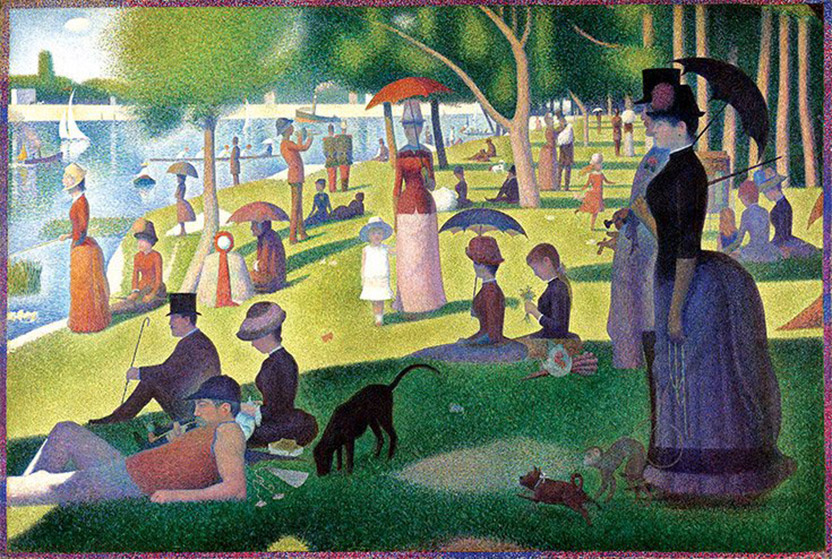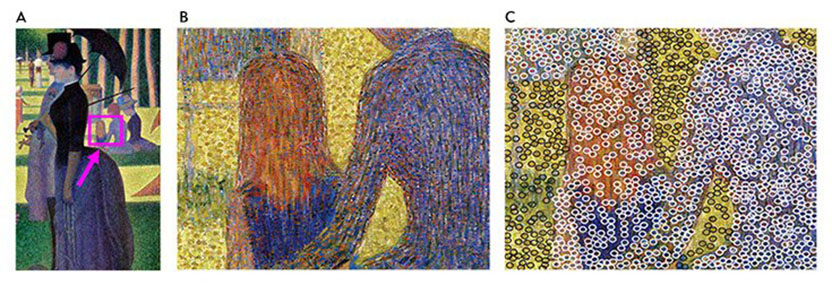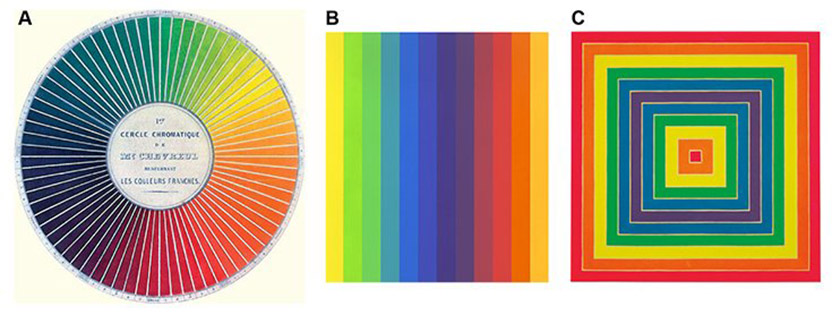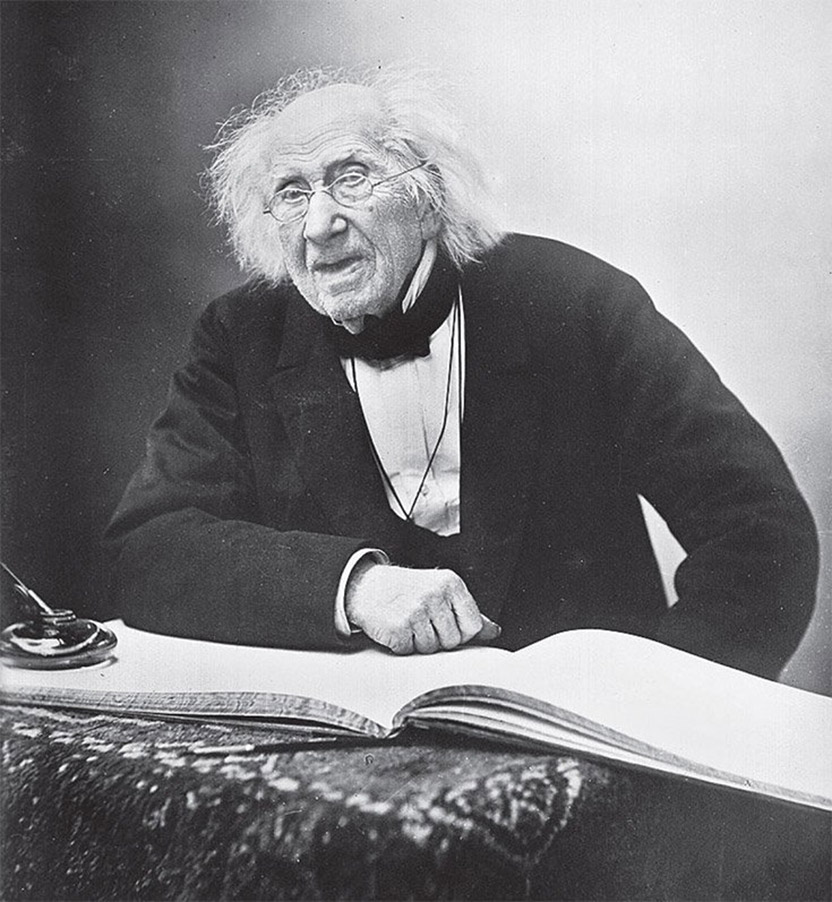 Opening remarks from the 2019 Lasker Awards ceremony
Opening remarks from the 2019 Lasker Awards ceremony
Lasker Jury Chair Joseph Goldstein follows the trajectory of an explosive idea that ricocheted around the world: a theory of color that ignited the imagination of artists and scientists, laying the groundwork for a revolution painting and a new way to visualize transcriptomic measurements within a single cell.
The iconic phrase “a shot heard ‘round the world” signifies an exceptional event. Seurat’s masterpiece La Grande Jatte, painted with many thousand dots of color, came as a shot to the art world—a shot fired by the imagination of the artist and inspired by the color theories of a scientist.
Here are the first four lines of Emerson’s “Concord Hymn”
By the rude bridge that arched to flood,
Their flag to April’s breeze unfurled;
Here once the embattled farmers stood;
And fired the shot heard ‘round the world.
Although no single shot can be verified as the first shot that started the War, Emerson used his phrase, “The shot heard ‘round the world,” to emphasize the importance of what might have been passed off as a minor local event, but what in retrospect signaled an historical event: the birth of a new nation.
“Concord Hymn” was widely published around the world in newspaper accounts of the 1837 dedication ceremony, and it later appeared in anthologies of the world’s most famous poems alongside those of Shakespeare, Milton, and Wordsworth. By the beginning of the 20th century, Emerson’s “shot” became a stock phrase to denote events of exceptional historical importance.
In the world of sports, “the shot heard ‘round the world” refers to the most famous moment in baseball history — a game-winning three-run homer by Bobby Thompson of the New York Giants on October 3, 1951 (Goldstein, 2010). Thompson’s dramatic shot into the bleachers came in the last minute of a decisive game for the National League pennant. At the bottom of the ninth inning, the Giants trailed the Brooklyn Dodgers 4-2. Thompson’s walk-off homer propelled the Giants to a 5-4 victory and a pennant win. This 1951 baseball game was the first sports event to be televised nationally coast-to-coast and was seen by millions of people. The New York Times reported the story on its front page along side an article describing a secret explosion of an atomic bomb by the Russians. At roughly the same time on the same day in 1951, two shots were heard ‘round the world — one thrilling, the other alarming.
A more recent “shot heard ‘round the world” occurred on February 11, 2006 when Vice President Dick Cheney accidentally shot a 78-year old Texas attorney during a Sunday afternoon quail hunt at a ranch in Texas. Nicknamed Quailgate by the media, the incident became the subject of numerous jokes. Among the best came from David Letterman, who opened his Monday night show with “Good news, Ladies and Gentlemen, we have finally located the weapons of mass destruction . . . it’s Dick Cheney.”
A Wild Shot Fired by Seurat at La Grande Jatte
Speaking of wild shots, among the wildest was a shot heard ‘round the art world. It was fired 135 years ago by a young French artist, Georges Seurat (1859-1891). What Seurat had done had never been done before: he had created a monumental painting entitled A Sunday Afternoon on the Island of La Grande Jatte using several hundred thousand tiny dots of color (see legend to Figure 1). This dot-technique was in striking contrast to the broad brushstrokes used by artists for centuries. Seurat had invented a new form of painting, known as pointillism. Although some critics initially panned his new style as “fuzzy,” the painting soon became admired as one of the most innovative paintings in history (Herbert, 2004; Burleigh, 2004; Foa, 2015).

Figure 1. A Sunday Afternoon on the Island at La Grande Jatte
Georges Seurat. 1884-86. Oil on canvas. 6 ft 10 in x 10 ft 1 in. Art Institute of Chicago. Seurat created this composition with several hundred thousand tiny dots of paint (see legend to Figure 2).
La Grande Jatte is a vast canvas, nearly 7 by 11 feet, that depicts the leisure-time experience of the Paris bourgeoisie in the mid 1880’s as they assemble on an island park in the middle of the Seine River just to the North of Paris’s city limits (Figure 1). During Seurat’s lifetime, the island was a popular suburban retreat frequented by artists, scientists, actors, and high-class prostitutes.
As a young man, Seurat spent his free time engaged in three main activities: visiting museums where he studied the Old Masters, visiting libraries where he familiarized himself with the latest scientific work on color theory and visual perception, and visiting La Grande Jatte where he observed the cast of characters who paraded around the park (Saatchi, 2017). The 25-year-old Seurat was determined to be a revolutionary artist whose work would not resemble anything that came before him. His three loves — painting, color theory, and people watching — soon converged, and in 1884 he began work on La Grande Jatte. After two years of intense work involving 30 sketches, 28 drawings, and 3 large preparatory canvases, he completed his painting. The finished work pictures a typical sunny Sunday afternoon in the park and includes 48 Parisians gathered to escape the heat of the city. Seurat also included three dogs, a monkey, a butterfly, eight boats, and five parasols.
As you study the painting, you may wonder whether you are really looking at a typical Sunday afternoon in the park. Everyone seems solemn, motionless, and statue-like. The only person who may be moving is the little girl in the orange dress, but even she appears to be frozen in midair (Burleigh, 2004). Something mysterious is going on — it’s as if Seurat wanted to freeze a single moment in time to make the viewer stop and consider what has been done. He had created a new language for art.
Seurat’s Invention of Pointillism: Inspired by Chevruel’s Color Theories
Figure 2 illustrates the pointillism technique that Seurat pioneered. The magenta arrow in Figure 2A denotes the segment from La Grande Jatte that is enlarged in Figure 2B. This segment represents 1/200th of the total surface area of the canvas. Figure 2C shows that it was painted with roughly 1100 dots, suggesting that Seurat used as many as 220,000 dots to create La Grande Jatte. Seurat’s invention of pointillism stemmed from contemporary ideas on color theory and optical illusion that were being advanced by Parisian scientists in the mid 1860’s. Seurat was especially attracted to the ideas of the chemist Michel Chevruel.

Figure 2. Enlarged Segment from La Grande Jatte, Illustrating Number of Dots Used to Create La Grande Jatte
(A) Arrow denotes the segment from the painting that is enlarged 9-fold in Panel B
(B) Detail of the enlarged segment illustrating Seurat’s technique of pointillism. This segment represents 1/200th of the total surface area of the canvas.
(C) Roughly 1100 dots of paint were used to create this segment of the painting, suggesting that the entire canvas contains 220,000 dots of paint.
Chevruel’s experiments on the chemical composition of dyes led him to construct a color wheel that provided a new way to classify colors (Roque, 2011; Loske, 2019). In contrast to Isaac Newton’s classic prism experiments of 1704 in which only seven colors were identified, Chevruel’s wheel consisted of 72 distinct colors whose radii depict the three primary colors of red, yellow, and blue; the three secondary mixtures of orange, green, and violet; and 66 additional mixtures generated from the primary and secondary colors (Figure 3A). The resulting sectors are each divided into segments that illustrate different levels of brightness. Chevruel’s color wheel, published in 1839, has stood the test of time and continues to be widely used today, as exemplified by the paintings of two leading contemporary artists, Ellsworth Kelly (Figure 3B) and Frank Stella (Figure 3C). Virtually all of Chevruel’s 72 colors appear in La Grande Jatte.

Figure 3. Chevruel’s Original Color Wheel and Two Contemporary Versions
(A) Chevruel’s chromatic circle containing 72 pure hues, from Circles Chromatiques de M.E. Chevruel (Paris, Didot Publishing, 1861).
(B) Spectrum, IX. Ellsworth Kelly. 2014. Acrylic on canvas, twelve joined panels. 9 ft x 9 ft. ©Ellsworth Kelly Foundation, Courtesy Matthew Marks Gallery.
(C) Concentric Square. Frank Stella. 1966. Acrylic on canvas. 63 in x 63 in ©2019 Frank Stella/Artists Rights Society (ARS), New York.
The story of how Chevruel got interested in color is a fascinating one (Roque, 2011; Loske, 2019). While working on the chemistry of dyes, he was consulted by a weaving company in Paris concerning a problem with their tapestries. Their dyed black wools appeared blue and violet when woven into the tapestries. Chevruel compared the black wools from Paris with the black wools dyed in the best shops in London and Vienna and found them all to be identical. This finding led to a brilliant insight: the problem with the black wools was not caused by the dyes, but rather how the eye perceived black when placed next to other colors in the tapestries. After undertaking a systematic analysis of how our perception of a given color is affected by its surrounding colors, Chevruel advanced the “law of contrast of colors,” which holds that when two colors are juxtaposed next to each other, each loses its own color and takes on the illusion of a new color. The eye mixes the colors.
To test Chevruel’s ideas, Seurat placed two different colors next to each other on a canvas (Figure 4A) and compared them to the same two colors mixed together on a palette before being applied to the canvas (Figure 4B). For example, when he placed dots of pure blue and pure yellow next to each other on his canvas, a new halo of green emerged (Figure 4A). The eye had created a color that was more vibrant and luminous than when yellow and blue were blended together on the palette. Convinced that Chevruel’s law would be applicable to painting, Seurat carried out a “high-throughput screen” in which he tested every possible combination of pure colors. He then executed the entire composition of La Grande Jatte with several hundred thousand dots of preplanned pure colors — a tour de force of science transforming art.

Figure 4. Seurat’s Test of Chevruel’s Law of Contrast of Colors
When Seurat placed dots of pure blue and pure yellow next to each other on the canvas, a new halo of green emerged (A) that was more luminous and vibrant than when the two colors were blended together on his palette (B).
Chevruel’s 80 Years of Scientific Creativity: Beyond Color
Chevruel, the inspiration for Seurat’s work, lived to be 103 years of age (1786-1889) (Figure 5). At age 7, he watched a guillotining during the French Revolution and at age 100 the construction of the Eiffel Tower. In between these events, Chevruel was an exceptionally creative and productive scientist for 80 years. Not only was he a pioneer in color theory, he was also famous for his multiple contributions to organic chemistry (Lemay, 1948; Carmichael, 1973; Wikipedia). He established the melting point as a key criterion for establishing the purity of substance, which allowed him to identify the molecular formulae of many organic compounds. He pioneered the chemistry of lipids, discovering that body fats were composed of triglycerides made up of esters of different saturated and unsaturated fatty acids. And in 1812 while isolating the chemical components of gallstones, he discovered and named one of the world’s most notorious molecules — cholesterol. Chevruel remained active scientifically to the end of his life, publishing his last paper at 102 years of age. He was unquestionably one of the most outstanding chemists of the 19th century.

Figure 5. Michel E. Chevruel (1786-1889)
Photographic portrait of Chevruel at age 100 by Gaspard-Felix Tournachon (known by the pseudonym Nadar), a renowned French photographer.
Seurat’s Influence: From Broadway to Playboy to Transcriptomics
In terms of longevity, Seurat was not so lucky as Chevruel. Seurat died in 1891 at age 31 of diphtheria. Despite his early death, his legacy survives in the memory of the tens of millions of visitors to the Art Institute of Chicago where La Grande Jatte has been exhibited for almost 100 years (Herbert, 2004). Seurat’s art is also memorialized in Stephen Sondheim’s Pulitzer-prize winning Broadway musical Sunday in the Park with George, in which George is a fictionalized version of Seurat who immerses himself deeply in painting his masterpiece (Rich, 1984). One of the characters in the play is George’s mistress who is named, appropriately, Dot. Dot models for George despite her frustration for having to get up early on Sunday.
Speaking of models, the May 1976 issue of Playboy magazine featured on its cover a semi-nude Playmate superimposed on Seurat’s painting. Here was a shot — a photoshot — that was not heard round the world, but one that was seen round the world.
A recent influence of Seurat pointillism is the introduction of the Seurat plot, a computational method for analysis of single-cell RNA-seq data (Butler, et al., 2018). The Seurat plot enable users to identify and interpret sources of heterogeneity from single-cell transcriptomic measurements (Figure 6). Even if he were blessed with thousands of dots of insight, Seurat could never have imagined that his invention of pointillism would become the basis of a powerful molecular technology used by thousands of scientists.

Figure 6. A Typical Seurat Plot that Detects Multiple Immune Cell Populations in Peripheral Blood Mononuclear Cells
Each dot represents an individual cell. Each cluster of dots represents a different cell type (modified from Butler, et al., 2018).
References
Burleigh, R. (2004). Seurat and La Grande Jatte. (New York, NY: Harry N. Abrams, Inc.).
Butler, A., Hoffman, P., and Smibert, P., et al. (2018). Integrating single-cell transcriptomic data across different conditions, technologies, and species. Nature Biotech. 36, 411-420.
Carmichael, E.B. (1973). Michel Eugene Chevruel. Experimental chemist and physicist: lipids and dyes. Ala. J. Med. Sci. 10, 223-232.
Emerson, R.W. (1996). The Concord Hymn and Other Poems. (Mineola, NY: Dover Publishing).
Foa, M. (2015). Georges Seurat: The Art of Vision. (New Haven, CT: Yale University Press).
Goldstein, R., (2010), Bobby Thompson Dies at 86; Hit Epic Home Run, New York Times
Herbert, R.L. (2004). Seurat and the Making of La Grande Jatte. (Chicago, IL: The Art Institute of Chicago).
Lemay, P., and Oesper, R.E. (1948). Michel Eugene Chevruel (1786-1889). J. Chem. Educ. 25, 62-70.
Loske, A. (2019). Color: A Visual History from Newton to Modern Color Matching Guides. (Washington, DC: Smithsonian Books).
Rich, F. (1984). Stage: ‘Sunday in the park with George’. New York Times, May 3.
Richardson, Jr., R.D. (2015). Emerson: The Mind on Fire. (Oakland, CA: University of California Press).
Roque, G. (2011). Chevruel’s colour theory and its consequences for artists. http://www.colour.org.uk
Saatchi, C. (2017). A Sunday Afternoon on the Island of La Grande Jatte—how art was transformed by Seurat’s science. The Telegraph. August 23.
